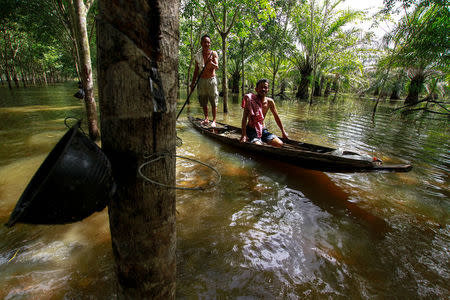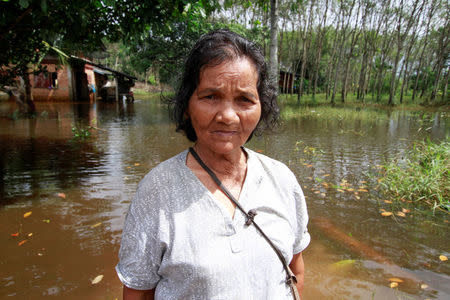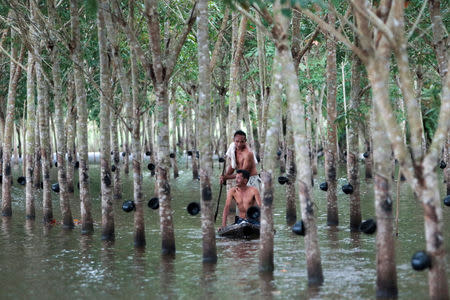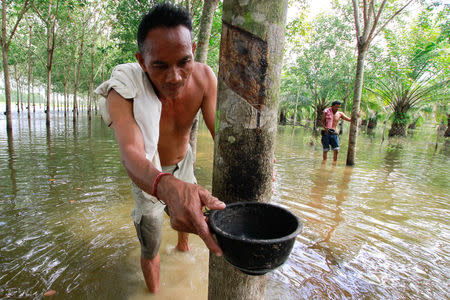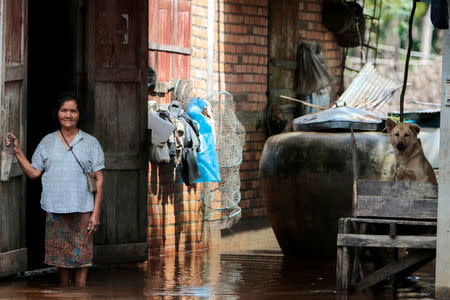Thai floods harm key region for world's rubber
By Surapan Boonthanom NAKHON SI THAMMARAT, Thailand (Reuters) - First came drought, then came floods. Rubber farmers in Thailand's south are counting the cost of extreme weather in the world's top growing region. "From afar the trees look withered," said 67-year-old Reang Onnuan, a lifelong rubber grower, looking out at the sea of water from which her trees protruded. "I don't know if tens or hundreds have already died," she said, describing it as the worst flood she had ever seen. Weeks of flooding because of unseasonal downpours have killed 45 people and brought a halt to rubber tapping at the height of the season in a key area of the world's biggest exporter of natural rubber. Concerns over what that could mean for global supply have fueled a rally in international prices to near a four-year peak. As a result of the floods, Thai output is expected to fall by 7.6 percent this year to 4.38 million tonnes, down from the 4.74 million tonnes previously expected, the Rubber Authority of Thailand told Reuters. Thailand accounts for nearly 40 percent of the world's natural rubber, most of which is used in car tires. Nearly two-thirds of Thailand's rubber growing area is in the south. Thailand is one of the world's most important exporters of agricultural commodities - including rice and refined sugar. In recent years, it has suffered weather extremes including droughts and heatwaves as well as floods. The rubber group said it was still early to give a full assessment of the long-term damage, adding that rubber trees can recover if they are not under water for too long. BOATS ON THE FARM Trees take about seven years to start to produce and have a productive lifespan of about 30 years. In Nakhon Si Thammarat, hit by some of the worst floods, Poan Thongmak, 51, takes a boat every day to check on his rubber trees. His farm spans almost 1.8 hectares (4.5 acres). "I don't know how much damage the trees will have suffered by the end, or if any of the them will survive," he said, looking out at waters which had receded from a high of two meters (6.5 feet) Meteorologists forecast the rains will last until the end of the month. Wira Samalee, who specializes in the southern climate, blamed the La Nina phenomenon linked to temperatures in the Pacific Ocean. The floods have affected some 1.6 million people in Thailand and the government has estimated that the economic cost could be $3.4 billion if they last for two to three months. Because of the floods, prices for unsmoked USS3 rubber sheets in Nakhon Si Thammarat have increased steadily and reached 84.32 baht/kg on Thursday, the highest in almost four years, according to Reuters data. But most farmers here are seeing no benefit. "All my trees have drowned. I can't tap any rubber," said Charan Maneecharoen, 51, standing almost knee-deep in his flooded farm and wondering how he would support his four children. ($1 = 35.33 baht) (Additional reporting by Panarat Thepgumpanat, Patpicha Tanakasempipat, Pilaiporn Promsompan; Writing by Patpicha Tanakasempipat; Editing by Robert Birsel)
